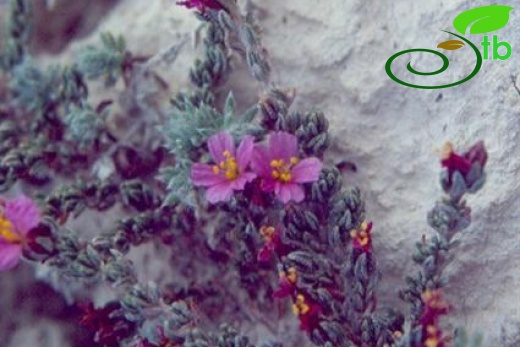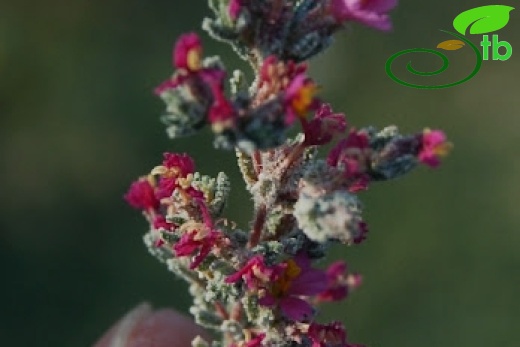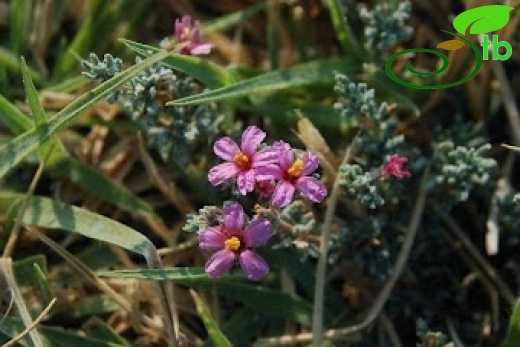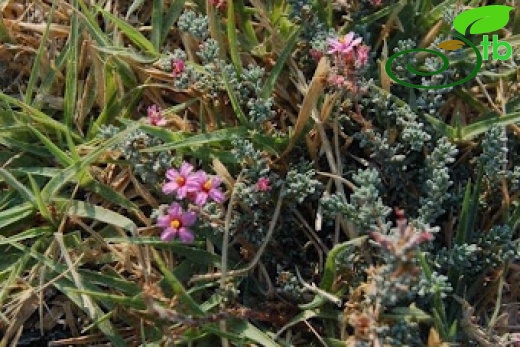Frankenia salsuginea
Frankenia salsuginea
Hoşpembe
Perennial, producing long leafy creeping prostrate stolon, rooting at nodes. Stem much branched; branches 1-5 cm long, terete, ± densely puberulous to crispy tomentose. Leaves thick, somewhat fl eshy, shortly petiolate or sessile; petioles with few long ciliate; lamina ovate-lanceolate, 1.5-2.5 × 1-1.2 mm, strongly revolute, densely white minutely crisped-pubescent and with a white crust below, glabrescent or with a white crust above. Flowers sessile in dichasial leafy cymes or solitary. Calyx narrowly oblong, 4-5 mm, sessile, glabrous and with a white crust or minutely crisped-pubescent below, reddish, with 5 prominent rounded ribs; teeth triangular-lanceolate, apiculate at apex, 0.7-1.5 mm long, glabrous. Petals pink or purple, drying yellowish, 7-9 mm long; lamina narrowly or broadly cuneate-obovate and narrowed into a long claw, apex of lamina rounded, irregularly dentate, appendage triangular, c. 0.5 mm. Stamens 6, shorter than petals; fi laments linear, glabrous; anther yellow, 0.8-1 mm long. Style trifi d; stigmas linearclavate. Capsule 2.5-3 mm long, including in calyx. Seed ovoid-fusiform, 1-1.5 mm long, shortly crispedpubescent to papillose. Fl. 6-7; Fr. 8-9.
Th is new species is similar to Frankenia hirsuta L., which is widely distributed in Turkey, but F. salsuginea is restricted to Tuz Gölü basin. F. salsuginea has creeping prostrate stem rooting at nodes while F. hirsuta is distinguished with erect to prostrate unrooted stem at nodes, ovate-lanceolate and strongly revolute leaves, 1.5-2.5 × 1-1.2 mm × 0.5-4 mm] and has glabrous teeth of calyx margin glabrous .





